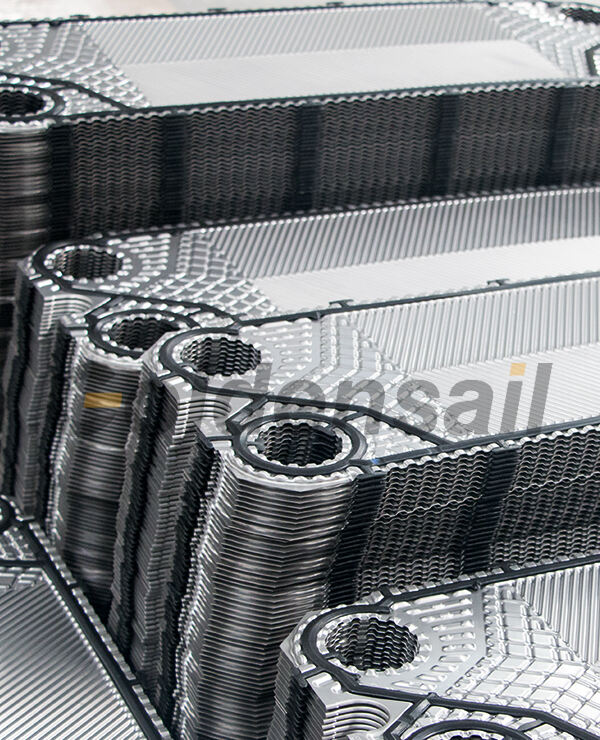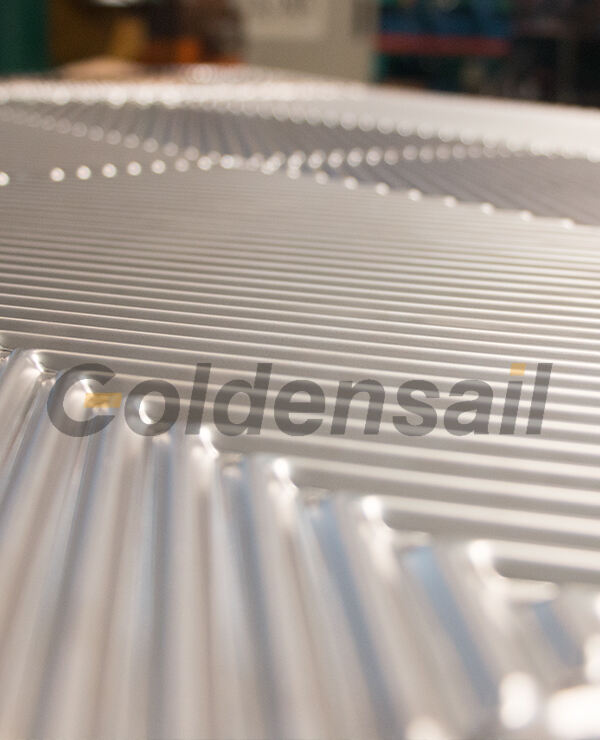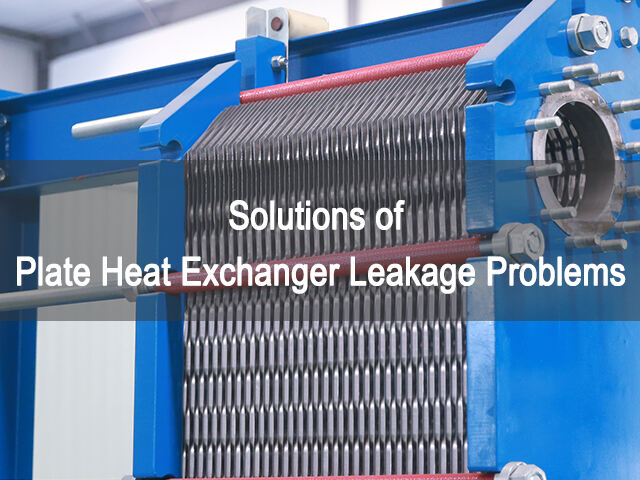During long-term operation, Plate Heat Exchangers (PHE), like all equipment, also require proper maintenance. Due to changes in operating conditions, aging of accessories or improper maintenance, heat exchanger equipment may have different forms of leakage problems. This article will systematically analyze the common types of leakage problems of plate type heat exchangers and provide targeted solutions to ensure the normal operation of equipment and product safety and extend service life.
Heat Exchanger Gaskets are prone to aging and breaking when operating in high temperature, high pressure or chemical corrosive media for a long time, causing sealing failure.
✅ Solution
Gaskets are prone to aging and breaking when operating in high temperature, high pressure or chemical corrosive media for a long time, causing sealing failure.
a. Replace gaskets: remove the old gaskets and thoroughly clean the plate sealing grooves; accurately install the new gaskets in the designated card slots to ensure that there is no misalignment, distortion or warping; use a torque wrench to tighten alternately in diagonal order to ensure that the plates are evenly stressed to avoid leakage or deformation of the plates.
b. Re-tighten the equipment: If the gasket is not severely aged and leakage only occurs due to looseness or long operation time, try to re-tighten the clamping bolts and ensure that the tightening size recommended by the manufacturer is reached.
c. Select the appropriate gasket material: Select the appropriate gasket material according to the actual operating conditions (media type, temperature, pressure), such as: NBR (suitable for oil, refrigerant, etc.), EPDM (acid and alkali resistant, suitable for high temperature water, food media), Viton/FKM (high temperature resistant, corrosion resistant, suitable for harsh chemical environment).
🔹 JINFAN supports customized heat exchanger gaskets, fast delivery, and 100% compatibility with mainstream models. For corrosion, temperature or pressure change scenarios, we can provide professional selection suggestions and sample support.

Under corrosive media, high pressure flushing or hard particle impact, the plate may pit, crack or even perforate, forming leakage.

✅ Solution
a. Repair plate defects (temporary measures): welding repair (argon arc welding of small holes or cracks in stainless steel plates, suitable for local defects and does not affect structural strength), adhesive sealing (using industrial strength glue to seal micropores, suitable for low-pressure systems as a temporary measure).
b. Blocking operation (emergency treatment): The damaged phe plate is treated by plugging the hole (i.e., not participating in heat exchange) to avoid the whole machine shutdown, but it will reduce the heat exchange area, which is suitable for short-term emergency.
c. Replacement of heat exchanger plate (fundamental solution): The plate has large-area corrosion or cracks, and the deformation makes the sealing line unable to fit. After the penetration test or water pressure test, it is confirmed that the plate is invalid. It is recommended to replace the plate. After replacement, improve the operating conditions of the equipment: adjust the medium (replace or adjust the fluid medium to reduce the corrosiveness or reduce the flow rate to reduce the impact force), install the filter device (install a filter at the inlet to reduce the wear of the plate by solid particles).
🔹 JINFAN can provide remote technical guidance for operations such as plate repair and plugging. The plate heat exchanger plate products match the full range of models, including stainless steel 316L, titanium, 254SMO and other materials.
If the clamping bolts or guide pillars are loose, deformed or corroded, the plate bundle will loosen, the seal will fail, and leakage will occur.
✅ Solution
a. Check the bolts regularly for rust, wear or breakage. If any abnormality is found, replace them immediately.
b. Use a caliper to measure the compression length of the plate bundle and compare it with the standard value in the equipment nameplate or technical manual. Re-tighten and adjust if necessary.
🔹 JINFAN provides fastening components for plate heat exchangers of various models and supports customization.
Improper operation of the plate heat exchanger is a hidden factor leading to leakage. For example, starting and stopping too quickly, water hammer effect, drastic flow fluctuations, equipment vibration, etc., may damage the sealing structure.
✅ Solution
a. Avoid over-temperature and over-pressure operation;
b. Strictly control the start and stop sequence to avoid pressure shock caused by sudden opening and closing of valves.
c. Install shock-absorbing brackets to alleviate the impact of external pipeline vibration on the equipment.
d. Install buffer tanks or air cushion devices: absorb water hammer impact in the system and protect the sealing structure of the equipment.
🔹 Get the operation and maintenance guide for free
In order to reduce the frequency of plate heat exchanger leakage, it is recommended that enterprises establish a sound maintenance system:
a. Check gasket aging, plate corrosion, clamping size, fastener status, etc. every 3-6 months.
b. Avoid seal failure due to poor compatibility of accessories.
c. Predict whether there is a risk of plate scaling or leakage by regularly testing the change in heat transfer efficiency.
d. Record the time and cause of each disassembly, maintenance, and failure to facilitate fault tracking and experience summary.
Leakage of plate type heat exchangers can cause media mixing, product contamination, and even shutdown. Therefore, we must attach great importance to the leakage problem of plate heat exchangers. If leakage is found and handled in time, the loss can be completely controlled within an acceptable range. Whether it is gasket aging, plate corrosion, or leakage caused by operational problems, our technical team can provide you with professional diagnosis and solutions to help you minimize losses.
